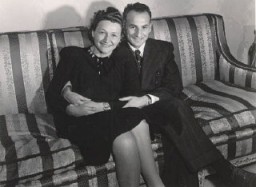You searched for: 生态农场理财源码定制开发【TG电报:@EK7676】平台包网搭建生态农场理财源码定制开发【TG电报:@EK7676】平台包网搭建47yW7MS6kt
<< Previous | Displaying results 1-18 of 18 for "生态农场理财源码定制开发【TG电报:@EK7676】平台包网搭建生态农场理财源码定制开发【TG电报:@EK7676】平台包网搭建47yW7MS6kt" | Next >>
-
Children in the Feldafing displaced persons camp
PhotoThree Jewish children in the Feldafing displaced persons camp. Feldafing, Germany, 1946–47.

-
Portrait of Jehovah's Witness Aart Bouter
PhotoAart Bouter, a Jehovah's Witness, was arrested by the Dutch police and deported to Sachsenhausen concentration camp. The Netherlands, 1946–47.
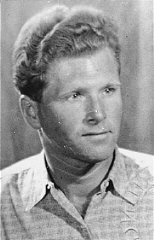
-
Babenhausen displaced persons camp
PhotoA young baby sits in its carriage next to a Quonset hut in Babenhausen displaced persons camp. Babenhausen, Germany, 1946-47.
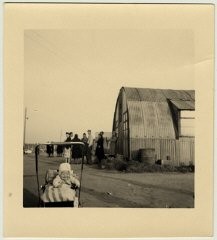
-
Leaving a displaced persons camp
PhotoSara Neumann carries her luggage labled with an address in New York as she leaves the Deggendorf displaced persons camp. Deggendorf, Germany, 1945–47.
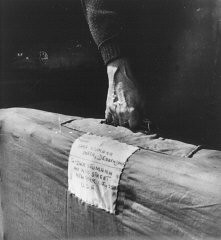
-
Street scene in the Warsaw ghetto
PhotoStreet scene in the Warsaw ghetto. The sign at left announces: "Soup in the courtyard, first floor, apt. 47." Warsaw, Poland, 1940-1941.
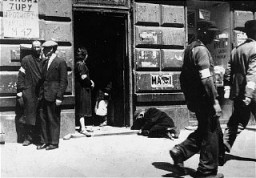
-
Lampertheim Displaced Persons Camp
ArticleAfter WWII, many Holocaust survivors, unable to return to their homes, lived in displaced persons camps in Germany, Austria, and Italy. Read about Lampertheim DP camp.

-
Cremona Displaced Persons Camp
ArticleAfter WWII, many Holocaust survivors, unable to return to their homes, lived in displaced persons camps in Germany, Austria, and Italy. Read about Cremona DP camp.

-
Ilija Lemajiþ
ID CardIlija was born in a village in the Croatian part of Yugoslavia. Like his parents and two brothers, Ilija was baptized in the Serbian Orthodox faith. The Lemajic family lived in a part of Croatia inhabited mostly by Serbs. After Ilija had completed grade school, his family moved to the village of Dubovac. When he was 30, he married a local girl and moved to Novska, where he found work. 1933-39: Ilija has a nice wife and two beautiful young daughters. He is employed in the village of Novska in Croatia as a…
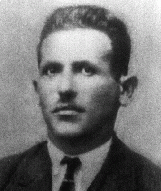
-
Frimit Bursztyn
ID CardFrimit was one of eight children born to Yiddish-speaking, religious Jewish parents. The Bursztyns lived in the heart of the same Jewish neighborhood in Warsaw where Frimit's father owned and operated a bakery located on Zamenhofa Street. In 1920 the Bursztyns moved to a comfortable, two-bedroom apartment in the same neighborhood at 47 Mila Street. Frimit attended Warsaw public schools. 1933-39: By 1939 six of Frimit's brothers and sisters had already moved out. Only Frimit and her younger brother were…
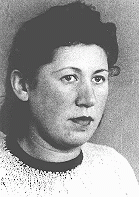
-
Gisha Galina Bursztyn
ID CardGisha was raised by Yiddish-speaking, religious Jewish parents in the town of Pultusk in central Poland. She married in the late 1890s and moved with her husband, Shmuel David Bursztyn, to the city of Warsaw, where Shmuel owned and operated a bakery on Zamenhofa Street in the city's Jewish section. In 1920 the Bursztyns and their eight children moved to a two-bedroom apartment at 47 Mila Street. 1933-39: By 1939 six of Gisha's children were grown and had left home: her eldest daughters had married, and…
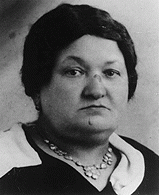
-
Shmuel David Bursztyn
ID CardRaised by Yiddish-speaking, religious Jewish parents in the town of Pultusk in central Poland, Shmuel married in the late 1890s and moved with his wife, Gisha, to the city of Warsaw. Shmuel owned and operated a bakery on Zamenhofa Street. In 1920 the Bursztyns and their eight children moved to larger quarters in a two-bedroom apartment at 47 Mila Street in the Jewish section of the city. 1933-39: By 1939 six of Shmuel's children were grown and on their own. Only his youngest son and daughter still lived…
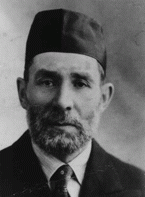
-
Miksa Deutsch
ID CardMiksa was the youngest of four children born to religious Jewish parents. The Deutches lived in the town of Bistrita in Transylvania, a region of Romania that belonged to Hungary until 1918. After 1910, the family lived in nearby Viseu de Sus. In 1922 Miksa moved to Budapest, Hungary, where he and his older brother, Pal, opened a business selling matches. In 1928 Miksa married Kornelia Mahrer. 1933-39: Miksa and Kornelia had three children, whom they raised with a religious education. Miksa and his…

-
UNRRA conference convenes in the United States
FilmThe United Nations Relief and Rehabilitation Administration (UNRRA) was established in November 1943 to aid refugees fleeing Axis aggression. After World War II, UNRRA sought to assist millions of refugees displaced by the war and its consequences. In the aftermath of the war, worldwide food shortages threatened millions with starvation and the world looked to the United States for assistance. In this footage, UNRRA's fourth council meeting convenes in Atlantic City. Director-General Herbert H. Lehman…
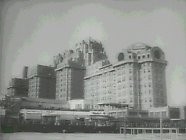
-
Fürstengrube
ArticleLearn about Fürstengrube subcamp of Auschwitz, including its establishment, administration, prisoner population, and forced labor and conditions in the camp.
-
Nazi Territorial Aggression: The Anschluss
ArticleThe Anschluss, Germany's annexation of Austria in March 1938, was the Nazi German regime’s first act of territorial aggression and expansion. Learn more.
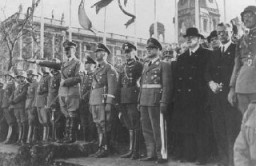
-
Mauthausen
ArticleThe Mauthausen concentration camp was established following the Nazi incorporation of Austria in 1938. Learn about the harsh conditions in the camp.

-
Life After the Holocaust: Norman Salsitz
ArticleAfter WWII and the fall of the Nazi regime, Holocaust survivors faced the daunting task of rebuilding their lives. Listen to Norman Salsitz's story.
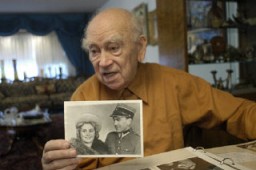
-
Life After the Holocaust: Aron and Lisa Derman
ArticleAfter WWII and the fall of the Nazi regime, Holocaust survivors faced the daunting task of rebuilding their lives. Listen to Aron and Lisa Derman's story.
